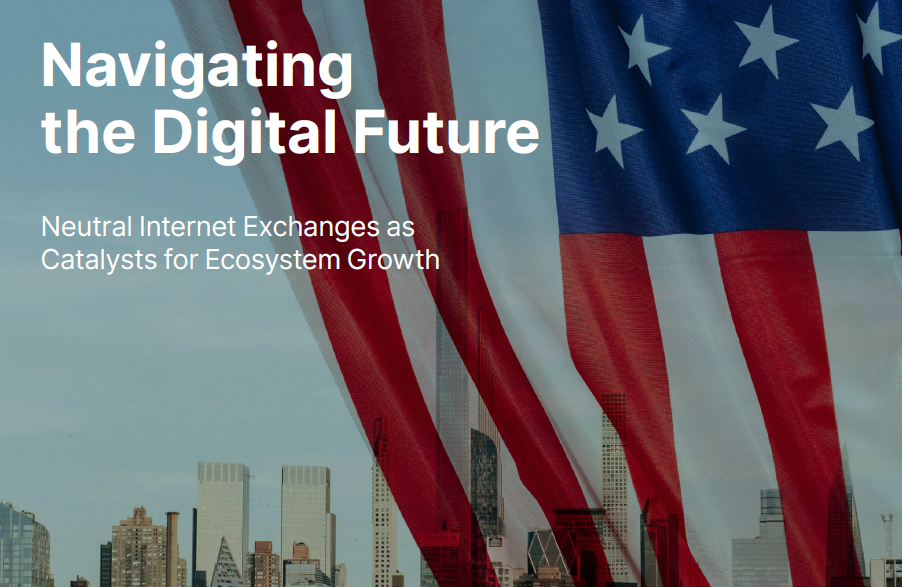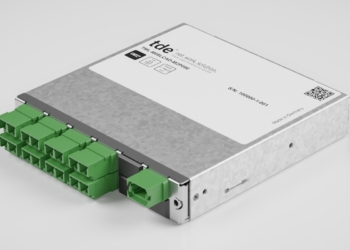80% of US Internet Exchanges are data centre and carrier neutral
Author: Simon Rowley

The US is steadily moving toward a data centre and carrier neutral framework to support new AI and cloud-based applications, with 80% of all Internet Exchanges (IXs) in the region now data centre and carrier neutral. That is according to a new independent study conducted by Dstream Group on behalf of DE-CIX, a global Internet Exchange operator.
With record levels of net absorption of data centre capacity throughout the US, the impact of the generative AI boom is being felt across the board. The comprehensive study provides insights into how the US interconnection landscape has evolved to cope with this demand, and provides in-depth predictions about its future.
In response to the rising need for high-performance interconnection – driven by the rise of cloud computing, AI, and interest in online gaming and high-resolution streaming – deployment of IXs in the country has surged by 600% in the past decade, the majority of which are now data centre and carrier neutral. These neutral platforms have on average four times more data centres from various operators connected to the platform than other IX models, offering enterprises and network operators greater choice and resilience opportunities.
Operated by independent specialists and distributed over data centres from multiple operators within a city or region, neutral IXs offer more access points and bring together more networks than the previously prevailing data centre/carrier operated IXs. Of the top 50 largest IXs in the US, 35 (70%) are neutral, demonstrating a strong preference of network operators for the model. Neutral IXs create network density and opportunities for businesses and operators to leverage more resilient, low-latency, edge-based connectivity.
“The past decade has demonstrated the immense value of the neutral and distributed model for driving digital growth in the US market,” says Ivo Ivanov, CEO of DE-CIX. “The study shows that these IXs, which follow the European model of neutrality, are not only future-proof, but essential to support the emerging needs of cloud computing, AI, and IoT to enable extremely low latency connectivity for critical current and future use cases. DE-CIX is proud to have played a crucial role in the growth of this model in the US, establishing robust interconnection hubs that power innovation and economic growth.”
The study also reveals that in today’s top 50 US-based IXs, the distributed and neutrally operated IXs have an average of 11 connected facilities operated by a minimum of two independent data centre operators within a metro area. In comparison, the data centre/carrier-operated IXs have an average of three facilities operated by a single operator within a metro area. Greater operator diversity and geographical distribution within the metro area allows companies freedom of choice of data centre operators and brings interconnection closer to end-users, reducing latency and improving connectivity performance.
“The distributed, independently operated IX model has several significant advantages for building digital ecosystems,” explains Serge Radovcic from Dstream Group, co-author of the study. “The neutral model can potentially be accessible from all colocation data centres within a metro area – and even from outside of the metro area. By leveraging connectivity to multiple data centre operators, an IX can eliminate the risk of vendor lock-in, and make it easier to establish redundant connections, increasing the resilience of connectivity for critical use cases.”
How neutral IXs encourage ecosystem growth is exemplified in the study on the basis of New York, an interconnection powerhouse. New York is unique in the US interconnection landscape for having two large-scale neutral IXs alongside two large data centre/carrier operated IXs, and almost double the average number of networks per IX found in US cities (134 compared to 70). In New York, this density is also reflected in the surge in demand for colocation space. The distributed and neutral IX model enables data centres outside of the city centre to be incorporated into the interconnection ecosystem, providing companies with solutions to the data centre squeeze being experienced in some historical hubs.
The study also investigates the growth in the data centre market in the US, demonstrating the link between strong neutral IXs in a market and a diverse ecosystem of connectivity-focused data centre operators. Demand is high and vacancy rates are low. Reflecting this, data centre planning and construction is increasing, with Northern Virginia and Dallas/Fort Worth in the lead. With a current total of 11,200 MW of data centre installed capacity across the US, a further 5,500 MW is currently being built, and another 12,600 is in planning, coming to over 160% growth in the near future.
As future trends in the interconnection and data centre markets noted in the study – such as edge computing, disaggregated computing, and AI – continue to evolve, the demand for the resilience and flexibility offered by neutral IXs will only grow.
“In order for digital ecosystems to develop and prosper, connectivity is non-negotiable,” Ivanov adds. “The US was home to the very first Internet Exchange, so it’s fitting that the country is now recognising the need for connectivity to move closer to the edge, providing faster access as demand for latency-sensitive applications booms. The distributed and neutral model is the ideal way to encourage innovation, opening up market choice and providing multiple paths to connectivity.”
For more from DE-CIX, click here.








